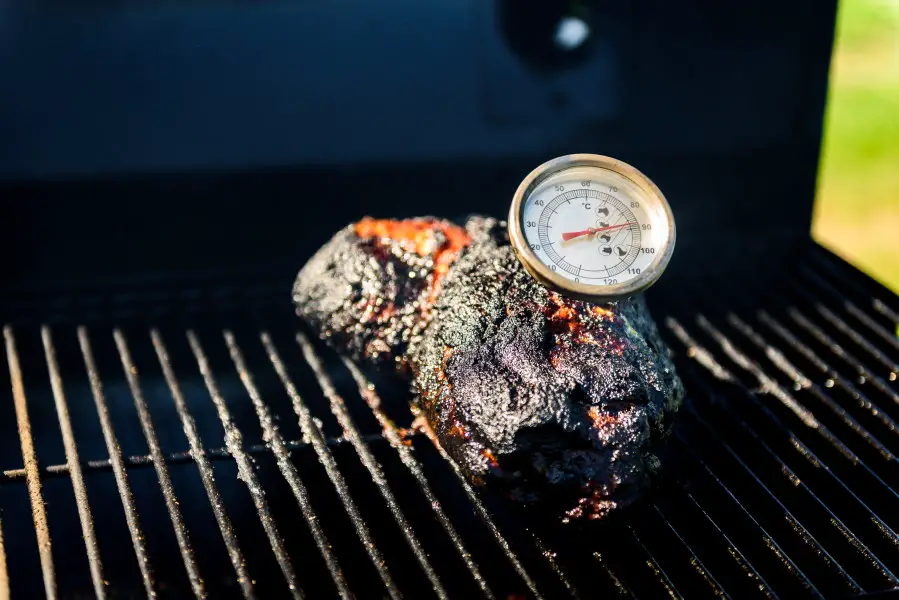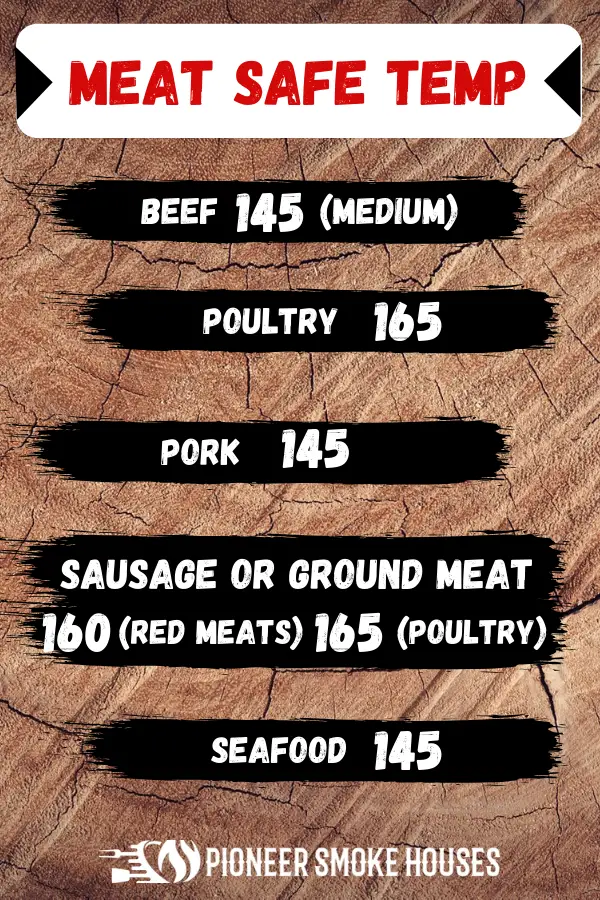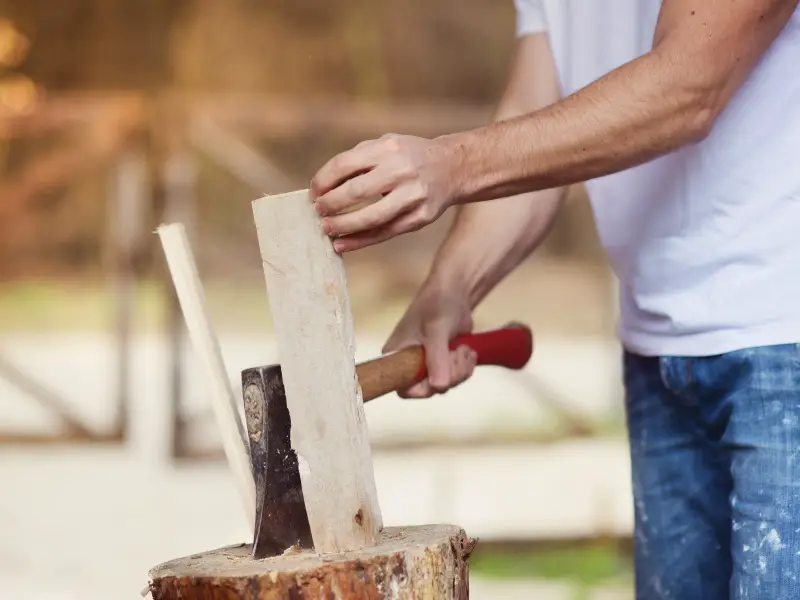
Knowing the correct temperature and times to smoke your meat is crucial to an excellent end product. If you are going to “wing it” and do whatever temperatures and times you think would be best, chances are they will not be, and the final product will either be raw or way overdone.
There is a correct way to smoke meats, and that all begins with the temperature and ends with the time. In this article, we will go over the different temperatures and times needed to smoke an array of different meats correctly. Not all meats are the same and need to be smoked at different temperatures and times.
Note: most links in this article are Amazon.com Affiliate links, see Affiliate Disclosure, thank you.
Cold Smoker Temperatures
When it comes to cold smoking meats, it’s a whole other ball game. The smoker will not be the same and is usually a smokehouse. The process can take very long, sometimes even days. Most items that are cold smoked are fish like salmon, trout, and freshwater eels. The reason for this is because the meat is very delicate.
When you cold smoke meats, there is a high risk of food contamination and bacteria that can form very easily at temperatures this low. We don’t recommend cold smoking anything other than cheese, nuts, and spices. If you plan on cold smoking something, please read up on it before doing so.
Click here for our article explaining Hot and Cold Smoking differences in detail.
Hot Smoker Temperatures
Hot smoking is the type of smoking that will be done in any home smoker. The temperature is going to be at least 175 degrees or higher to make sure that there are no bacteria formed that could harm the meat. Plus, it is very difficult to maintain any temperatures lower than that in these types of smokers.
All meats are different and need to be smoked properly to avoid any safety hazards or improper cooking techniques. Always make sure you have a digital meat thermometer to check the internal temperatures of the meats as they smoke.
Also, an internal smoker thermometer that measures the temperature of the smoker is always a good idea. Some smokers come with thermometers built into the smoker, but they can become faulty over time and are known to be inaccurate. Upgrading or replacing your smoker thermometer will help you more than you know.
Also, use a stopwatch or a kitchen timer to keep track of the amount of time the meat has been smoked and a digital instant-read thermometer is a must-have piece of equipment.
Beef
There are many different types of beef you can smoke, but for the most part, there are only a few that work well. Yes, you can smoke burgers, steaks, roasts, and beef casseroles but these are best cooked in an oven, in a sauté pan, or on the grill.
The main items to be smoked will be ribs and brisket. Here is an overview of these meats. While beef is safe to eat at a rested internal temperature of 145 degrees, most tough cuts will need to have higher temperatures, as discussed below.
Brisket– this wonderful meat selection has a lot of tough tendons and muscle that needs to be broken down over time in a smoker. Brisket is considered one of the toughest cuts of meats on the cow and needs to be treated in a particular way.
Smoke this meat at temperatures of 225-275 degrees for about 12-16 hours, depending on the weight and size. The internal temperature of the final product should be around 200 degrees.
Ribs– there are several different cuts of beef ribs, but they all need to be treated the same way. When smoking beef ribs, try the starting temperatures at 225 degrees for anywhere from 4-8 hours depending on the type, weight, and size of the ribs. The final temperature of the ribs should be at 195 degrees.
Check out our article Everything You Need to Know About Smoked Deer Meat
Poultry
When it comes to smoking poultry, two types are the most common. Chicken and Turkey. However, they are both wildly different in terms of preparation, wood choice, and cooking methods. But when it comes to the actual smoking times and temperatures, they are almost identical.
Chicken and turkey may be prepared differently, but they need to be smoked at a temperature of 250 degrees for anywhere from 3-8 hours depending on the size and weight of the bird. The final internal temperature should be no less than 165 degrees to avoid any foodborne illness or salmonella.

Pork
Pork is one of the easiest and cheapest meats to smoke. For the most part, all parts of the pig, including the ribs, loin, shoulder, and butt, can be prepared and smoked the same way. There is not much difference in the times or temperatures, either.
Pork needs to be smoked at a temperature of 225 to 250 degrees for anywhere from 4-10 hours depending on the cut, size, and weight of the meat. The ending rested internal temperature needs to be at least 145 degrees but is best to be finished at 175 degrees for perfection.
Sausages
Sausages are a little different because the meat has been ground up and stuffed in a casing. The time will be much shorter of around 1-2 hours and needs to be smoked at 275 degrees. The final rested internal temperature should be around 160 degrees for red meat and 165 degrees for poultry to be safe.
Seafood
Fish and other seafood can be very delicate and need very little time to smoke. It is best to smoke all seafood at a temperature of 225 degrees and for no more than an hour, depending on the size and weight of the product. The final internal temperature should be about 145 degrees but no less than that. Anything over 165 degrees will be dried out and ruined.
Click here If you would like to see the FDA’s food safety chart.

Fuel Sources and Controlling temperatures
All the different types of fuel will determine how hot the smoker will get or how long the fuel source will last. If it is propane, then the heat can always be controlled manually.
Pellets will be in a controlled machine, and usually, the smoker will do all the work for you. Just add pellets, and the machine will do the rest from feeding them into the smoker and controlling the correct temperature, and maintaining them.
Woods and charcoal will be a little different when it comes to how long they last and controlling the heat levels. If the heat becomes too high, you could always take some of the coals out of the smoker, or the more common way is to cool the fire down with water.
If they are not hot enough, you can always add more wood or coal, or you can use the ventilation system on the smoker to adjust the airflow, which in turn will turn up the heat.
Tips
Our top tip for smoking food is to “write it down.” Keep notes on time and temperature for each cook. When you get the perfect time and temperature, you don’t want to forget it.
I have a spiral notebook with a few pages for each meat type. If you cook a certain type of meat more often, you might want to reserve more pages for that item. Also, use a grading system like A, B, C at the end of each cook so you can dial your cook in and improve it on your next cook.
Buying a premade meat smoking guide is also a great way to start, and they are very affordable. Click this link to see our top recommend magnetic meat smoking guide on Amazon.com.
Conclusion
The main thing to keep in mind when smoking meats, controlling temperatures, and keeping an eye on the internal temperature, is to make sure never to leave the smoker alone. Always be hands-on when smoking anything and pay attention. Otherwise, you may end up with a final product you are unhappy with.

